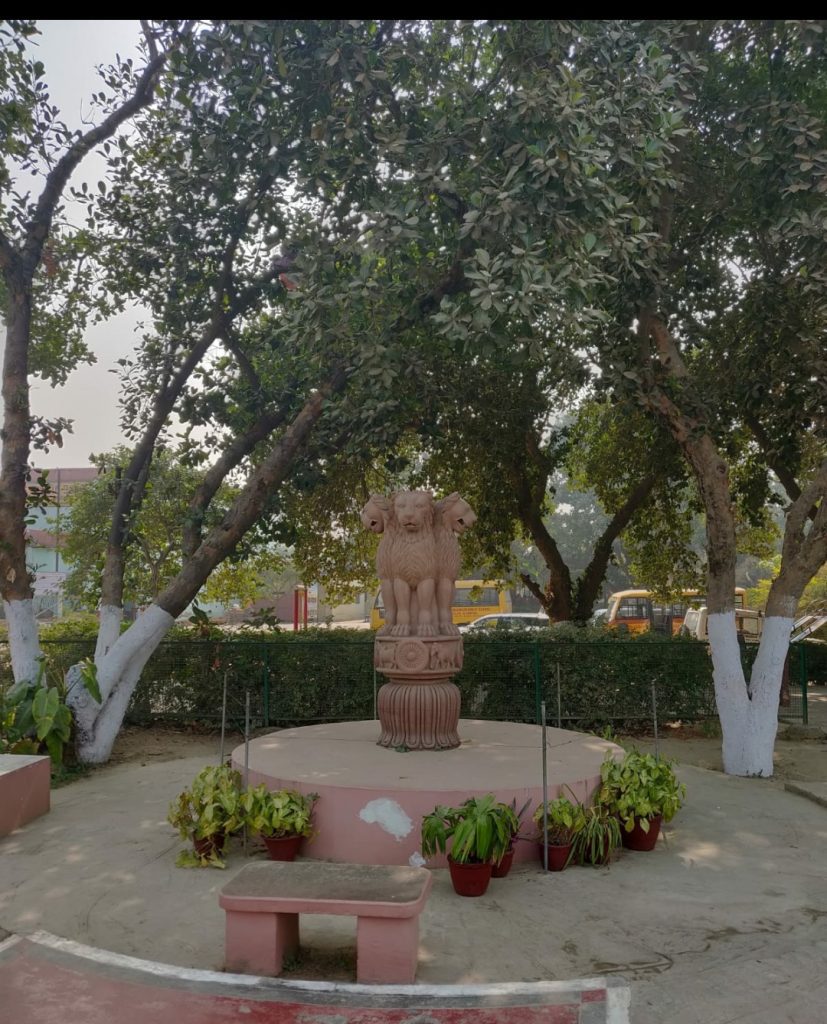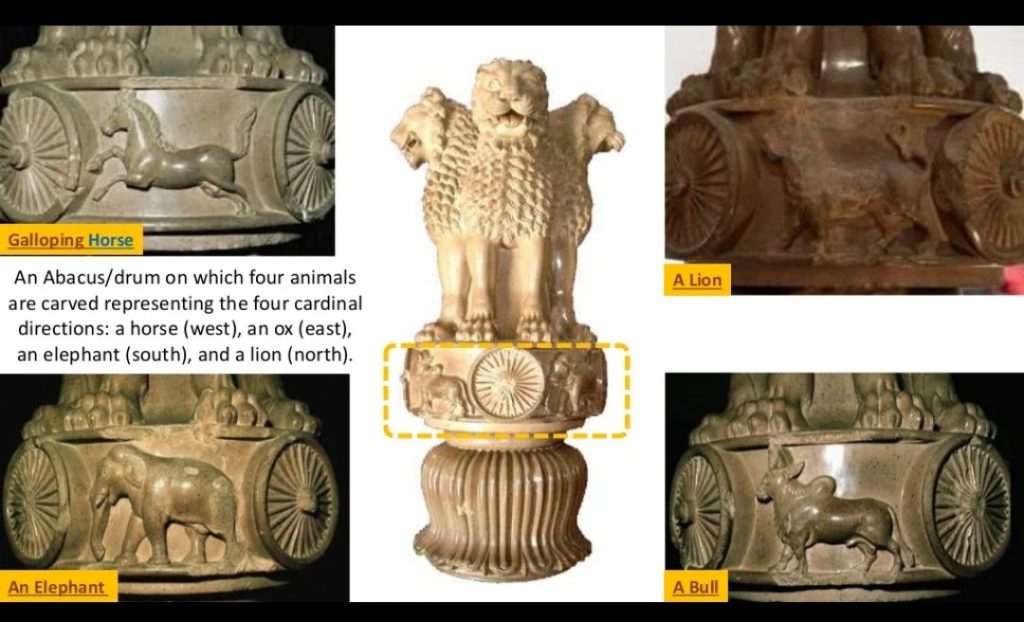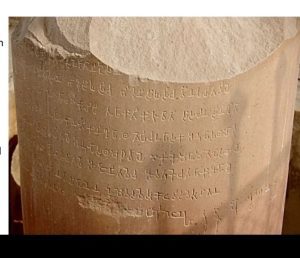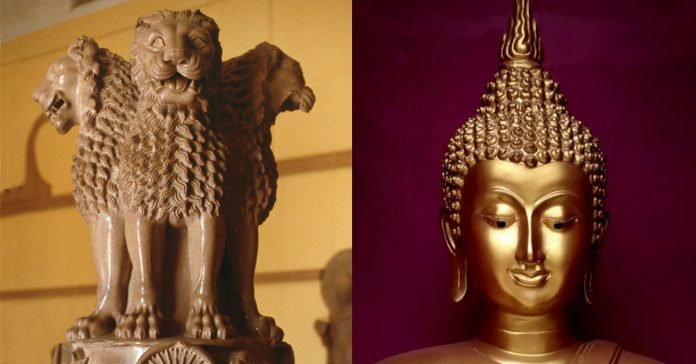Amidst recent debates on our national emblem, we at Avaaz24 tried to explain the symbolism of Lion Capital in consonance with Buddhist philosophy.
India’s National emblem is a partial reproduction of Ashoka’s Lion Capital at Sarnath. It is a symbol of contemporary India’s reaffirmation of its commitment to world peace and good will.
History of the Ashoka’s Lion Capital
In 250 BC, Ashoka the great, erected this Lion Capital atop on a pillar at Sarnath. It measured about 2.15 m. This pillar marked the spot of a great event in Buddhism called “Dharmachakra-Pravarthana”.
Gautam Buddha preached his first sermon here at Sarnath in 528 BC. It comprises of a unique and frank intellectual statement of basic problem of life as well as its situation. This event i.e. “turning the wheel of law” is the “Dharmachakra-Pravarthana”.
ASI’s Sarnath Winter Excavations of 1905 by archaeologist Friedrich Oscar Oertel, brought this Lion Capital Pillar to the present day world. There after, it is in display at Sarnath ASI museum.

Further, on Jan 26, 1950- a black and white graphic representation of the capital was adopted as National Emblem of Republic of India.
![Lion Capital excavated at Sarnath [ASI photo]](https://avaaz24.com/wp-content/uploads/2022/07/2.jpg)
Parts of the original Lion Capital
Carved out of a single block of polished sandstone, the lion capital has the following parts: (from bottom upwards)

- A bell shaped vase covered with inverted Lotus Leaves [Purna- Ghata]. A full bloomed lotus exemplifies the fountain head of life and creative inspiration.
- A circular abacus above the Purna Ghata in bas relief. It has sculpted figures of Elephant [facing north], a horse [facing south], a humped bull [facing west] and a lion [facing east], each separated by a Chakra of 24 spokes.
- Four seated lions back to back on the circular abacus
- A crowing Dharmachakra with thirty two spokes

Parts of Indian National Emblem– (from top downwards)
- Four seated lions back to back resting on a circular abacus
- A Circular abacus with one wheel in the center and a horse to its right and a bull to its left
- The words “Satyameva Jayathe” from Mundaka Upanishad {meaning Truth alone Triumphs} below the abacus in Devanagari script.

Buddhist Cultural Significance:
The symbolism of the capital has been variously explained, some of them are:
[Source: Indian National Songs and Symbols by P. Thankappan Nair, 1959]
- The four animals on the abacus represent the gods- Surya (horse), Indra (Elephant), Shiva (Bull) an Goddess Durga (Lion) and their subordination to the Buddha and his dharma.

- The drum with its four animals and Chakras represent the Anavatapta Lake- one of the sacred lakes of their Canon, where Buddha had his bath.
According to Buddhist text has four mouths guarded by a horse, a dragon, a bull and an elephant. Besides, these four animals symbolize four directions or the four corners of the world.
3. According to Buddhist symbolism, an Elephant represents conception, a Bull represents the zodiac constellation at the time of birth of Prince Siddharta [Vishabha Lagna/ Tarus], the Horse represents the great departure and the Lion represents the enlightened Buddha.
- The seating of lions back to back signifies their power from the common axis. In a word, the center of their power is the Dharma Chakra, the great wheel of Law, which they are carrying on their head. Apart from above, the smaller wheels below, on the abacus also give the seated lions their support.
Thus, Lion the supreme ruler of the forest is governed by the Dharma in his actions from above and below.

That unknown master sculptor of Ashokan era presented us the lions in all their nobility, regal dignity and imperial majesty. Besides, the virility, strength, fierceness and ferociousness are delineated on the stone with utmost care and precision.
Overall, the beauty of Lion Capital is beyond its description. Undoubtedly, it is not that easy for a modern day artist to create a replica of it.

Ashokan Brahmi Schism Edict
Interestingly, this Ashokan Lion Capital pillar bears the following Prakrit inscription in Brahmi script:

[English translation-]
You should act in such a way that the Sangha cannot be divided by anyone. But verily that monk or nun, who shall breakup the Sangha should be compelled to put on white robes and to reside in what is unfit for the residence of a recluse
In summary, this Schism edict of Ashoka was to prevent split in the Sangha. {Sangha means a community}
But, what are we doing today? Are we following the essence of our National Emblem?
ALSO READ: Democracy can never be a Police State – Supreme Court


